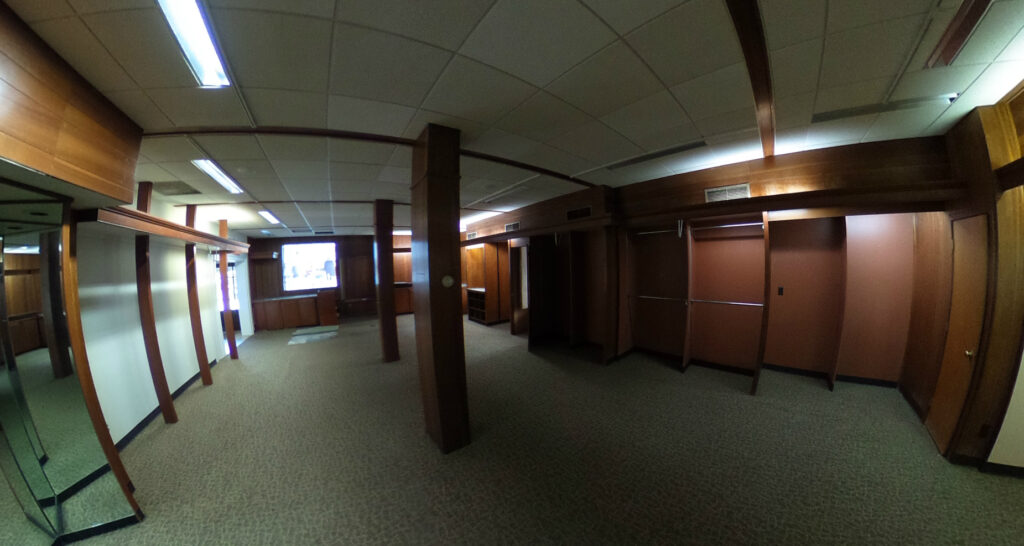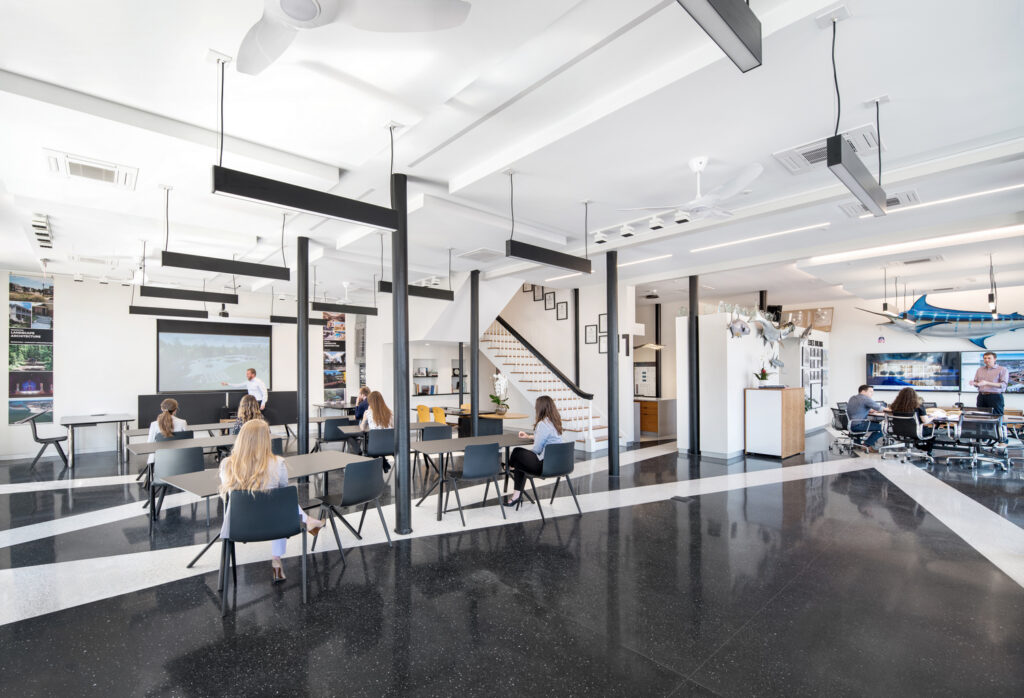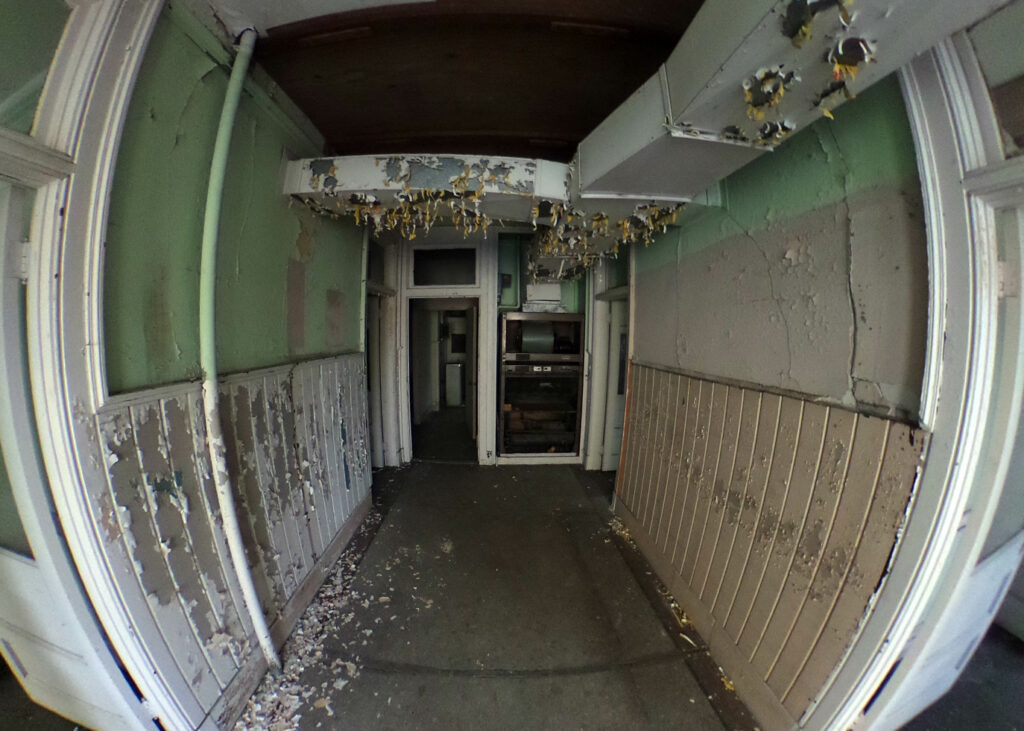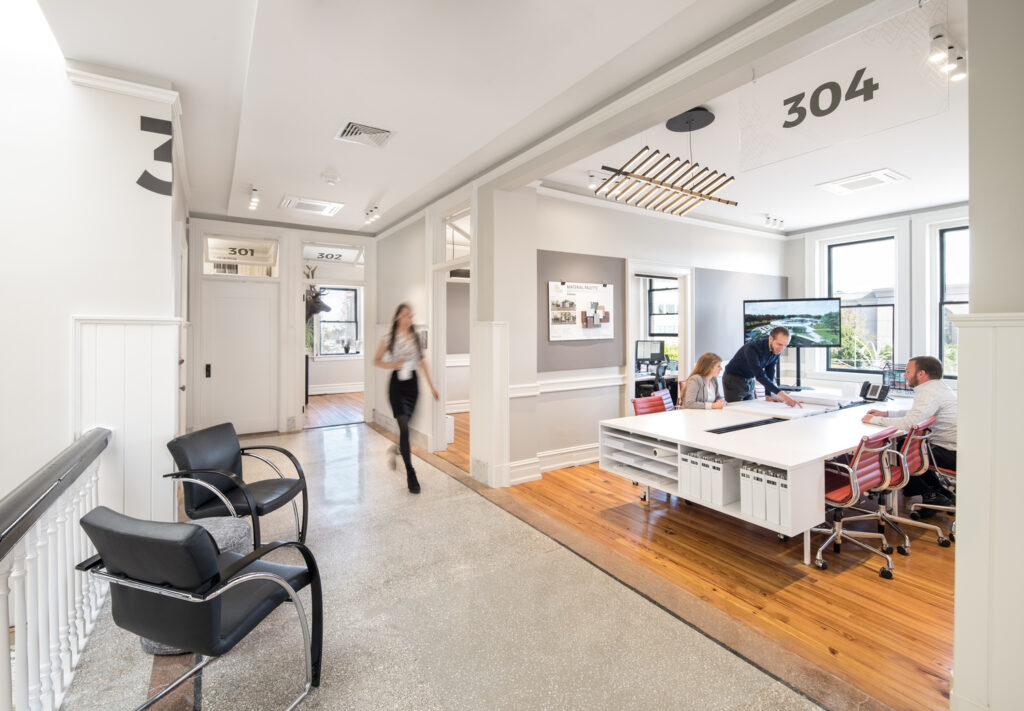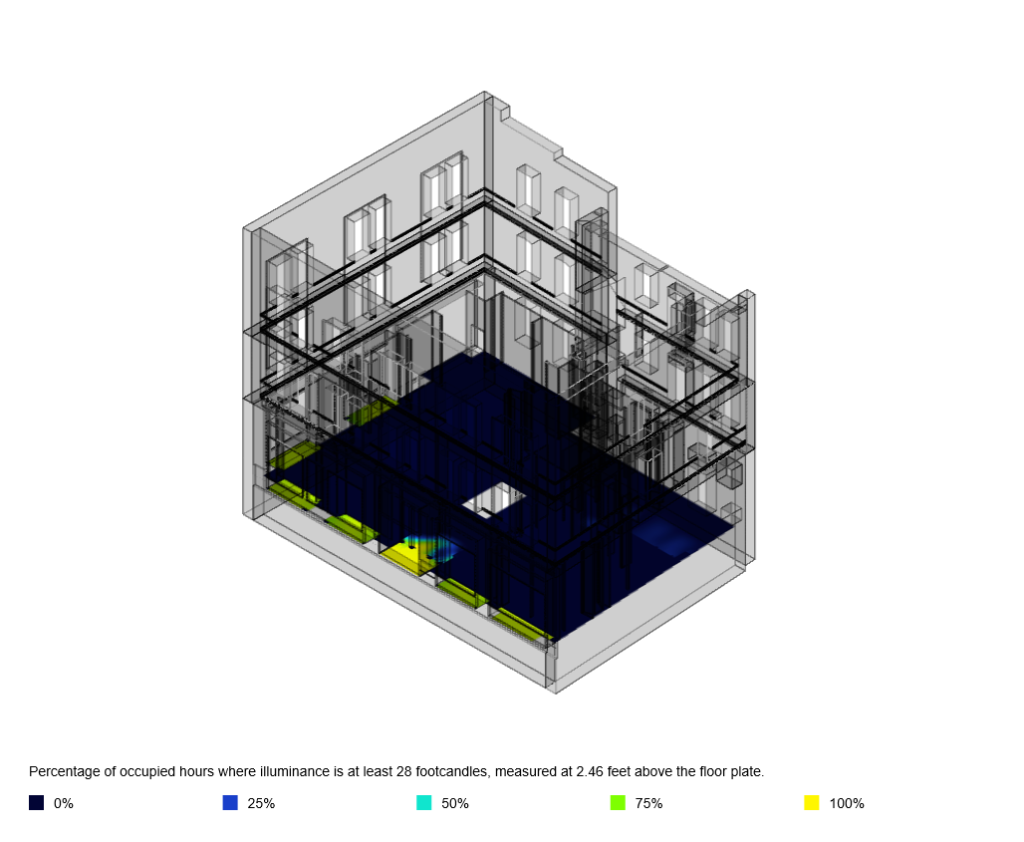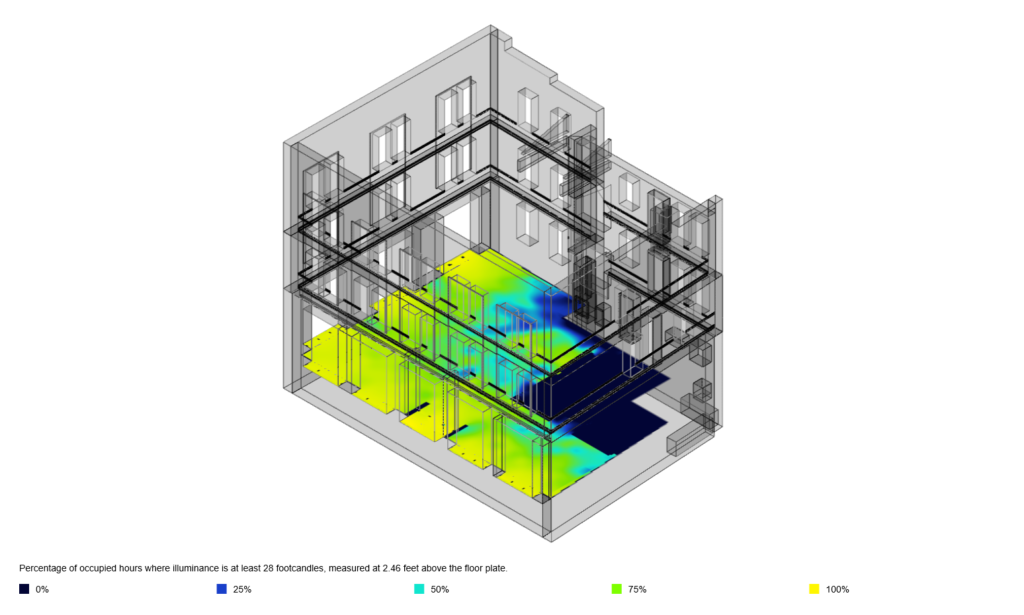A case study by Jacqueline Childress, Associate IIDA, LEED® Green Associate, Andrew McKinley, AIA, LEED AP®, and Haley Morgan
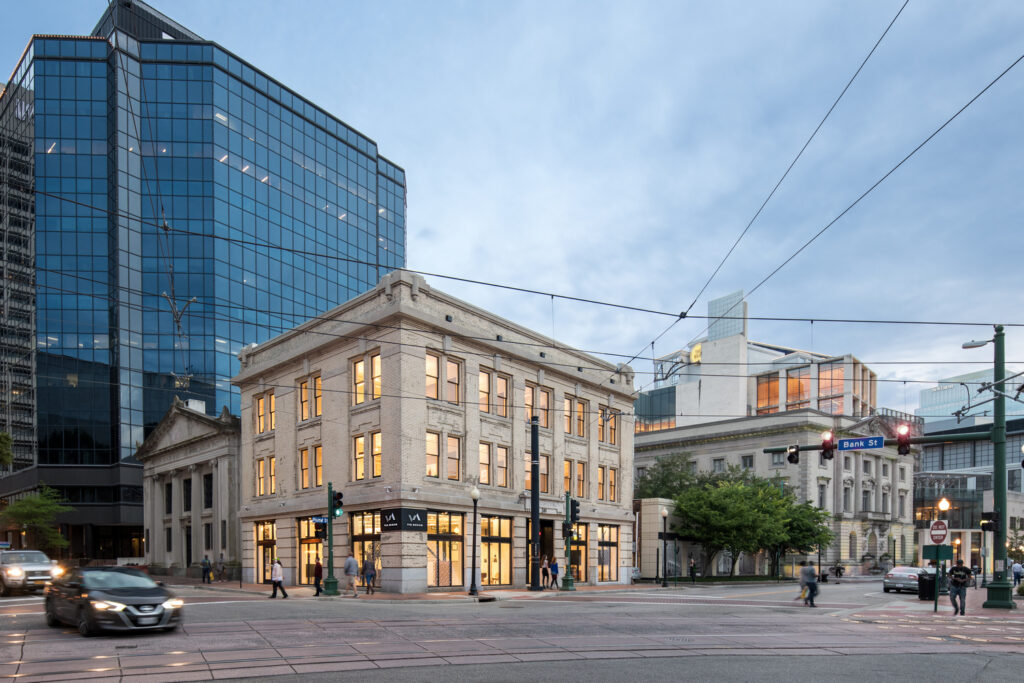
Architecture is a design process focused on creating spaces for people. The building itself, formed of solid materials like steel and masonry, forms a shelter for people to occupy. But the interiors are what connect to human emotions, create a sense of place, and establish the identity for the building’s functions.
The design of a space is just as important as the design of the overall building. They speak to each other and create harmony; when executed well, creates movement and depth that directly impacts anyone who experiences the space. Interior design is a key factor in how people experience and interact within the built environment. How the elements of a space are created, applied, and incorporated impact each individual’s emotional response to that space.
In 2019, when VIA moved into our new home, The Essex, it was a defining transformational point in time. The Essex became our new platform from which we launch our brand, blending a modern workplace with a historic structure.

BEHIND THE SCENES
VIA’s vision was to create a home away from home for everyone to feel more comfortable in the work environment.
Repurposing a historic building is not as simple as putting on a fresh coat of paint and updating lighting. There are strict limitations and guidelines to the level of change allowed. Any proposed updates require stringent review and approval by the Department of Historic Resources. Due to this, we see a historic building for what is, what it was, and what it was originally designed to be. We are then able to restore it to a new integrity. The intention is never to destroy what exists but simply improve upon it. We don’t change a historic building for the sake of change alone.
For The Essex building, the first floor had been renovated so many times throughout the years for various uses that the original design integrity had been lost. For this reason, the guidelines to adhere to were more lenient, allowing the insertion of a new design into the space that adapted to our intended use. The alterations respected the historic structure’s timelessness, as the building has stood since 1905, while maintaining cohesion throughout.
The second and third floors, however, remained relatively undisturbed since the building’s original construction, and due to the guideline limitations, modifications to the original building materials and layout were restrained. Existing finishes, hardware, trim, and doors were salvaged and restored to their former grandeur. The process included cleaning and sealing the hardwood and terrazzo floors, bringing the marble wall base back to its original form, restoring the original hardware, and adding a fresh coat of paint to the plaster walls, wood batten wainscot, chair and picture rails, single pane windows, and hardwood doors with operable transom windows.
Through a careful selection and layout of furniture, coupled with modern technology and connectivity, this smart building uses less energy, provides excellent occupant comfort, and promotes flexibility for future adaptability. By doing this and much more, The Essex and its vast transformation is our way of showing the community “best practices” to invest, design, restore, preserve, and create smarter buildings for the future.
HOW VIA APPROACHES DESIGN
Interior design is so much more than just picking out paint colors. Interior designers make strategic decisions on colors, textures, patterns, sheens, proportions, spacing, lighting, and everything in between, all while making each one of those decisions appear intentional and effortless.
We start by seeking a clear understanding and establish a vision. Identifying what the space will be used for, how people will interact within the spaces, and understanding the occupants’ expectations for ambiance are critical. This creates a jumping-off-point that allows interior designers to apply our knowledge and training to design something that is well received, thoroughly enjoyed, and supportive of the spatial functions.
The Essex has an ample amount of natural daylighting, access to fresh air, great views, and visibility through the space.
We restored the grand stair for natural communication between office floors. Plants have been brought into all levels of the building, with staff encouraged to bring in their own as well, to always maintain a connection to nature.
Several pieces of furniture were salvaged and integrated with new furniture selections, while most items in the space are new. Furniture finishes are kept light and bright and incorporated white surfaces to provide a backdrop for the drawings we work with daily.
The Essex exemplifies clean, simple, and fresh design integrated with the warmth of historic reclaimed hardwood and terrazzo floors to capture the originating character of the building while looking forward as a modern office that anyone would be happy to call home.

